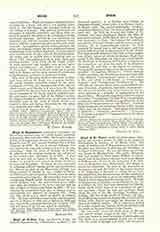

Hugh of St-Cher (Lat. DE SANCTO CARO; DE SANCTO THEODORICO), a Dominican cardinal of the thirteenth century; b. at St-Cher, near Vienne, in Dauphine (France), about 1200; d. at Orvieto (Italy), March 19, 1263. He studied philosophy, theology, and jurisprudence in Paris, and next taught law in the same city. In 1225 he entered the Order of St. Dominic, and soon discharged therein the office of provincial, and next (1230) that of prior of the Dominican monastery in Paris. He became the confidant and adviser of several bishops, and the trusty envoy of Gregory IX to Constantinople (1233). In 1244 Innocent IV raised him to the cardinalate, and was greatly helped by him at the Council of Lyons (1245). The same pontiff entrusted him with various important affairs, approved whatever changes Hugh suggested in the altogether too strict rule which Albert, the Patriarch of Jerusalem, had wished to impose on the Carmelites, and after the death of the Emperor Frederick II, sent him as his legate to Germany. Alexander IV appointed him one of the examiners of the so-called “Evangelium Aeternum”. Chiefly through Hugh’s exertions, the Dominicans were provided with a new Biblical “Correctorium”, which is still extant. in MS., and which is still known as “Correctorium Hugonis” and “Correctoriuin Praedicatorum”. His “Postillae in universa Biblia juxta quadruplicem sensum, litteralem, allegoricum, moralem, anagogicum” has often been printed, and bears witness to his untiring industry as a compiler of explanations of the Sacred Text. He is justly regarded as the first author of a verbal “Concordance” to Holy Writ, a work which became the model for all following publications of the kind (see Concordances of the Bible). Cardinal Hugh composed also numerous shorter works, among which may be mentioned: “Speculum Sacerdotum et Ecclesim”; “Sermones dominicales”; “Sermones de Tempore et Sanctis”; “Commentarius in IV. libros: Sententiarum”.
FRANCIS E. GIGOT

